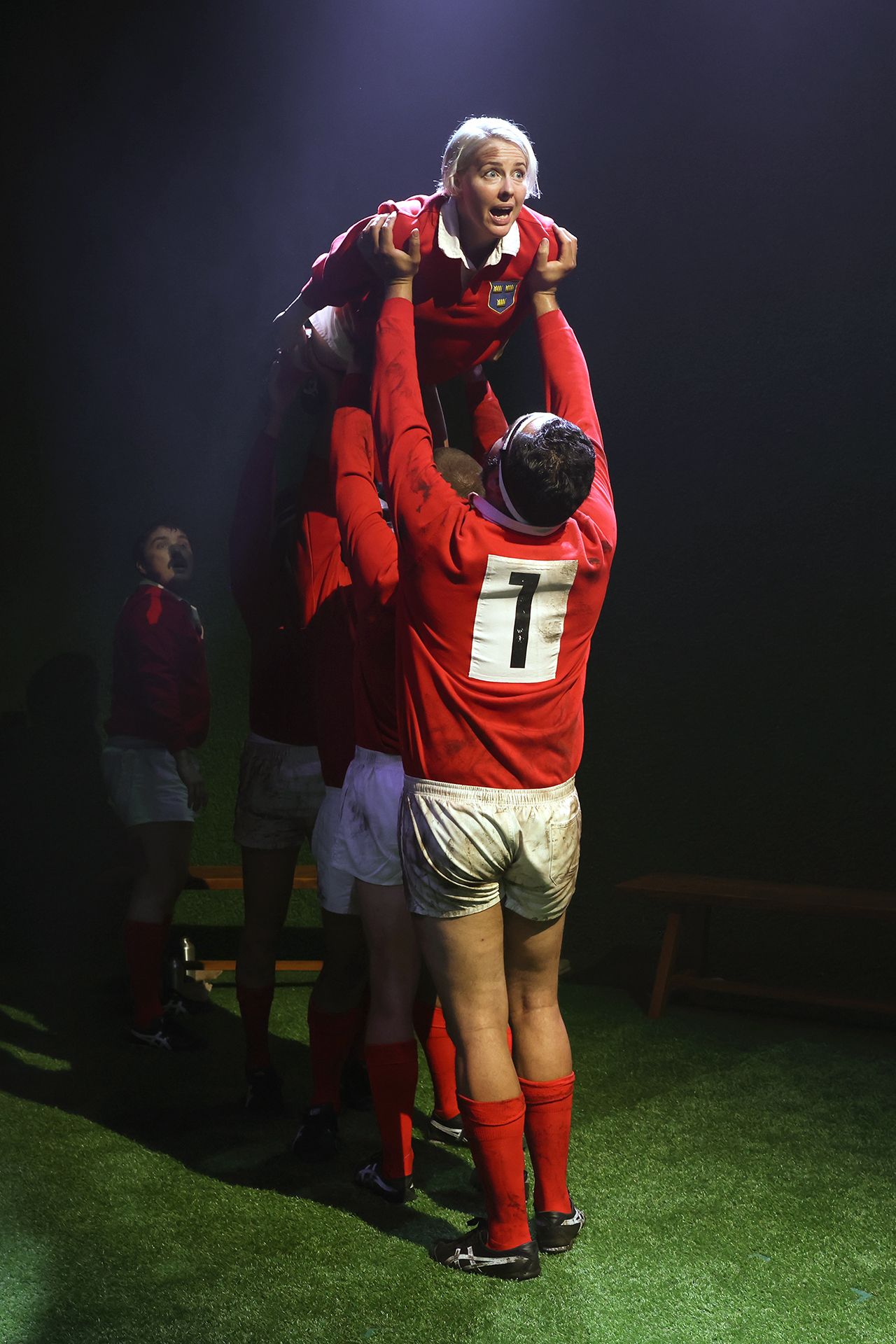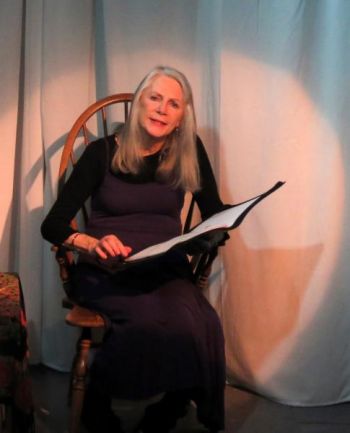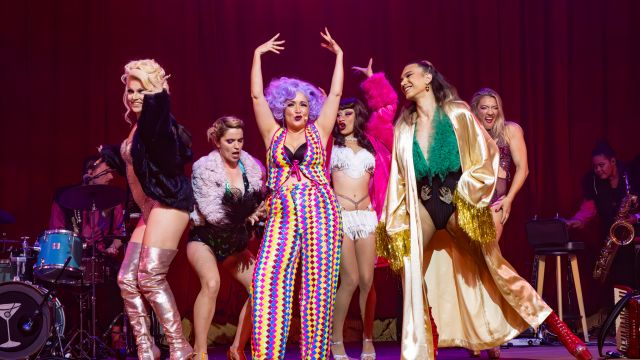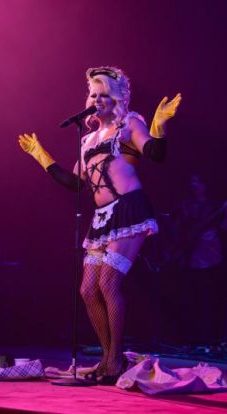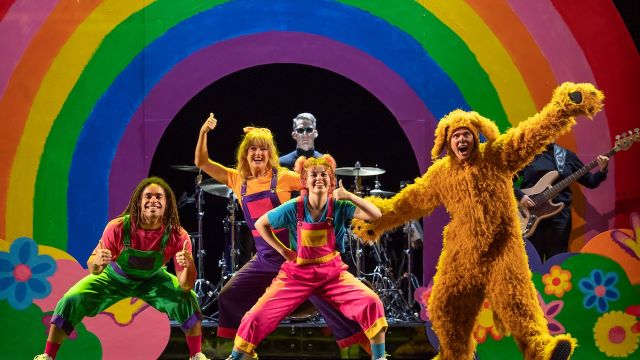By Lin-Manuel Miranda and Quiara Alegria Hudes. PACA Productions. Directors: Rodrigo Medina Noel and William Pulley. The Concourse Chatswood. 2 – 11 Feb, 2024
Reviewed : 2 February, 2024*

If In the Heights is, as the directors describe, “a poignant portrayal of the immigrant experience, highlighting the struggles, aspirations and triumphs of the Latinx community” in New York’s Washington Heights, then this production is a jubilant celebration of the many migrants from South American countries – and other parts of the world – who have made their homes in Australia.
In their biographical notes in the program, most of the principal performers, and many of the twenty dancers and singers who support them, pay tribute to their Latin roots and the history, language, music and dance that is still an integral part of their lives. Other cast members – whose heritages include Egypt, Poland, the Philippines, New Zealand and Sri Lanka – share their stories as well.
Directors Rodrigo Medina Noel and William Pulley say they “envisaged a show that would capture audiences with its energy, authenticity and celebration of Latin culture.” I wonder if they realised just how ‘authentic’ and inclusive their production would be, or the joy and energy – and history – their cast would bring to it.

Lin-Manuel Miranda’s ability to merge musical genres to create a cultural ‘picture’ of the times plays into the hearts of this cast – and the multicultural, multigenerational audience it will attract. The rhythms are heady and exciting, the story is gritty and real, the characters identifiable and appealing. There’s something for everyone – but especially for those who don’t often see their faces or hear their stories on stage or screen.
Though the setting is a steamy summer in New York, the story is universal – and the music has the appeal of being totally Latin … but just as totally ‘today’. The orchestra embraces the detail and variety of Miranda’s composition with delight – and musical “fireworks” it entails.

Along with the musicians, choreographers Janina Hamerlok and Alex Ocampo have embraced the different ‘beats’, their choreography acknowledging traditional Latin dance forms as well as the ‘street styles’ that evolved with the hip hop and rap music born in the Bronx in the 1970s.
Henry Lopez Lopez as Usnavi opens the production with the title song, beginning with a rap that sets the scene and introduces the characters that live around his ‘bodega’ and operate the other little stores in their corner of “The Heights”.
There’s his grandmother, Abuela (Irene Toro), who has brought him up since his parents’ tragic death and is also the much loved and loving ‘matriarch’ of this happy, busy community.
There is the Rosario family who run the local cab company. Their daughter, Nina (Danika Rojas), has dropped out of college in California and doesn’t know how to tell her ambitious hard-working parents, Kevin (Ivan Amaro) and Camilla (Paulina Johnson) that she has lost her scholarship. Usnav’s friend Benny (Andrew Read), works for the Rosarios. He is in love with Nina – a fact not accepted by Kevin!
Next door to Usnav’s store is a beauty salon run by Daniela (Belen Johnson) and her funny friend Carla (Fernanda Murialo). Their employee Vanessa (Natalie Johnson) has dreams of becoming a fashion designer and is also a very talented dancer.
Usnav’s lazy cousin, Sonny (Lachlan Ceravolo), is a bit of a joker but has dreams of social justice. He knows that Usnav is in love with Vanessa and asks her out on Usnav’s behalf.
Other constants in the area are Graffiti Pete (Nik Zielinski) who is good friends with Sonny – and the local Piraguero (Carlos Galino) who sells drinks and ices from his trolley.
These are the people of The Heights. Their lives interconnect because of their heritage, their struggles and their hopes for the future. They share their problems – like Nina’s concern about facing her parents in songs like “Breathe” (Respira), and her father’s memories of his poor background and fear of feeling “Useless” in the face of making good and supporting his family.

Together they deal with the problems facing them, even a power outage that results in looting that damages their businesses – but not their energy or their faith.
While many of the songs in this musical reach across generations and cultures, none does so more heart-warmingly than “Patience and Faith” performed with warmth and heart by Irene Toro as Abuela, reminding the community – and the audience – of the importance of believing in themselves and the future.
Under the care and direction of their two directors, these performers – and the Ensemble who are like their extended family – bring the fears and hopes, tears and joys of this brave, optimistic community to life in a production that reaches joyfully and musically across cultures and generations.
First published in Stage Whispers magazine
*Opening performance



